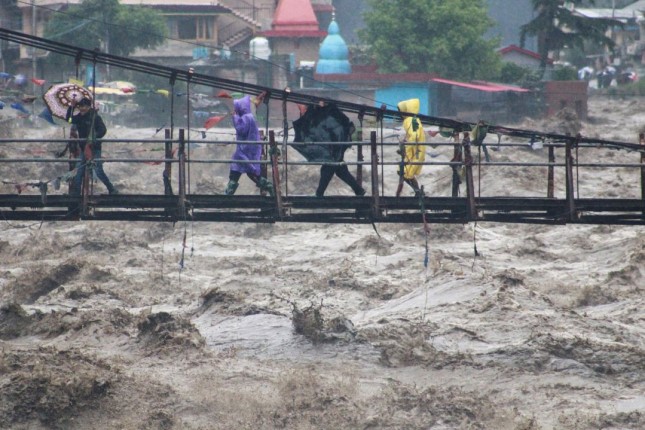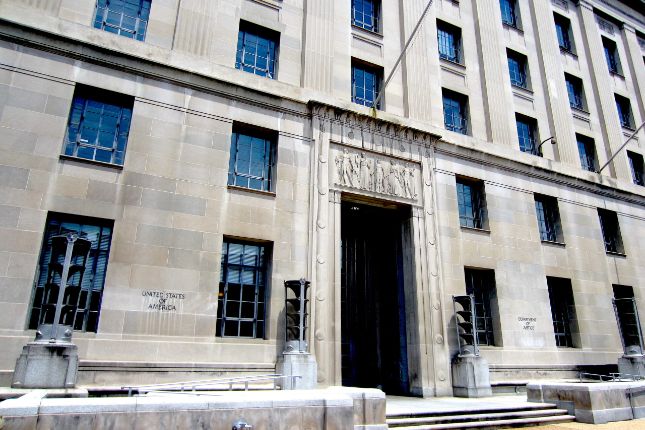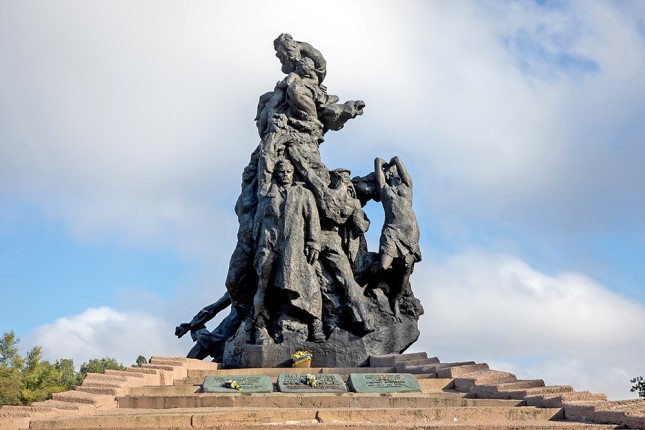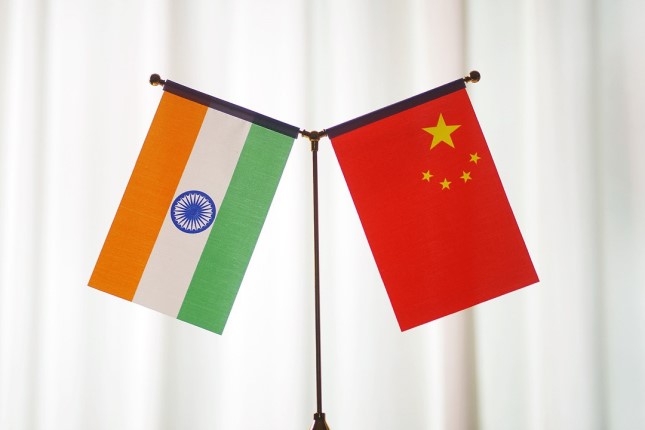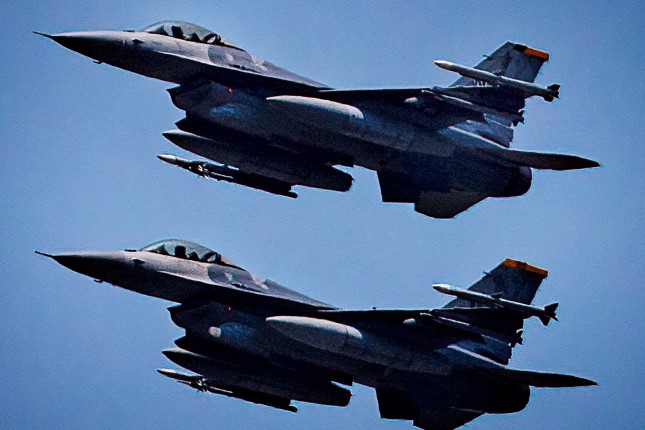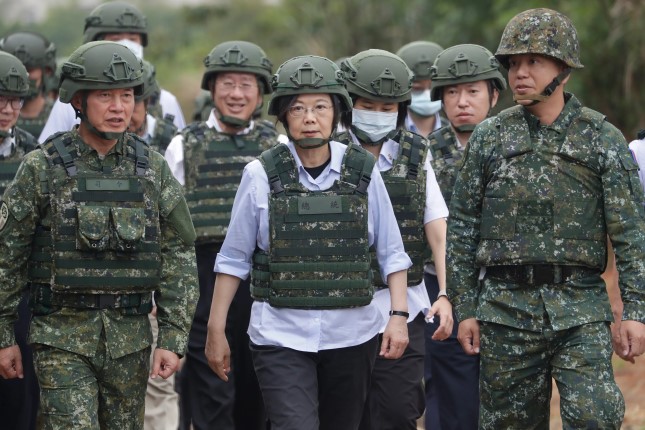Torrential downpours over the past fortnight have led to the deaths of more than 100 people and unleashed havoc across northern India in what climate scientists describe as the country’s worst monsoon in decades. The deadly monsoon comes as several other countries grapple with similar extreme weather.
Himachal Pradesh, India’s most northern state, was the worst affected by the heavy rains. Authorities reported that over 1,300 roads were damaged, resulting in a total estimated damage bill in the state of 40 billion Indian rupees (approximately $US486 million). Other impacted states include Assam, Meghalaya, Sikkim, Uttarakhand, Uttar Pradesh and Madhya Pradesh.
New Delhi, the national capital, recorded 153 mm of rain in 24 hours on July 10, the highest in a single day in July since 1982. The water levels of the Yamuna River in Delhi hit an all-time high, breaching the previous record level of 207 metres (over 680 feet) in 1978. Schools, houses and other buildings have been inundated and shut down.
Delhi, Punjab and Himachal have received 112 percent, 100 percent and 70 percent more rainfall than usual so far in this year’s monsoon, according to the India Meteorological Department (IMD).
The extreme rainfall follows blistering heat waves in Northern India that began in June and saw temperatures soar to 45 degrees Celsius (113 degrees Fahrenheit) in large parts of the country. More than 170 people died from the heat, most of them in the north.
Extreme temperature and rainfall events, droughts, rising sea levels and intense cyclones are recurring events across the sub-continent and clear signs of climate change with deadly consequences.
In India, 959 people were killed by floods in 2020 and 656 in 2021. In 2018, it was reported to the Rajya Sabha, the upper house of the national parliament, by the Central Water Commission that 107,480 people had died from extreme rainfall and floods across the country between 1953 and 2017.
Heatwaves have claimed more than 17,000 lives in the past 50 years in India, according to a paper authored by M. Rajeevan, former secretary of the Ministry of Earth Sciences, along with four other scientists. While India’s main summer months—from April to June—are always hot, temperatures over the past decade have become much more intense and dangerous.
The IMD reports a 24 percent increase in the number of heat waves in 2010–2019 compared with 2000–2009. The mortality rate from high temperatures increased by 62 percent between 2000 and 2019.
Even though these disasters are projected in the media as “natural” calamities, they are, in reality, mainly produced by the destructive drive for profits by big business and are, hence, man-made. Unplanned urbanisation and development along with haphazard burning of fossil fuels are key factors.
Last year, the Centre for Science and Environment (CSE), a New Delhi-based public interest research and advocacy organisation that tracks extreme weather events, released its “State of India’s Environment Report 2022.”
It revealed that the country experienced extreme weather events on 314 out of the 365 days, meaning that at least one extreme weather event was reported in some part of India on each of these days. The report concluded that these events caused over 3,000 deaths in 2022, affected some 2 million hectares of crop area, killed more than 69,000 livestock and destroyed around 420,000 houses.
Extreme weather events claimed 233 lives and damaged 950,000 hectares of cropland in the country in the first four months of this year (2023), according to a recent study led by the CSE.
These recurring calamities impact most heavily on the poorest sections of society. They always produce crocodile tears from political leaders and the media and grossly inadequate compensation payments.
On July 10, Prime Minister Narendra Modi’s office issued a cynical tweet declaring that local administrations are working to ensure the well-being of those affected by floods while the PM “took stock of the situation.”
Aggrieved farmers and flood victims have angrily spoken out about the devastation. One social media video showed an elderly woman in Haryana slapping Ishwar Singh, a parliamentarian from the Jannayak Janta Party which is part of the BJP ruling alliance. “Why have you come now?” she asked.
While climate change and global warming are drastically changing weather patterns, Modi and his Hindu supremacist Bharatiya Janata Party (BJP)-led government, like its Congress Party-led predecessor, has refused to take any real action to mitigate the devastating impact of these catastrophes or to provide adequate relief.
Instead, it spends billions of dollars upgrading the Indian armed forces in pursuit of the ruling elite’s geo-political ambitions while giving major tax incentives and other assistance to big business.
For decades India’s ruling elites have failed to act on warnings made by climate scientists. They have refused to build the necessary infrastructure to prepare for these disasters.
Addressing the threat posed by climate change and global warming requires a global solution. Protection from floods, heatwaves and a reversal of the imminent global calamity posed by climate change requires coordinated international collaboration and planning. This can only be attained through the establishment a Union of Socialist Republics of South Asia as part of a world socialist federation.
Photo: People on bridge across River Beas swollen due to heavy rains in Kullu District, Himachal Pradesh, India, Monday, July 10, 2023 © AP Photo / Aqil Khan.
Source: World Socialist Web Site.
